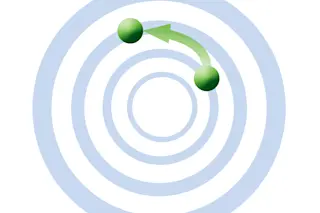Quantum weirdness struck again in 2019. An experiment described in Nature in June settled a passionate debate that’s divided physicists for over a century, while also raising new questions. Researchers announced they’d tracked a quantum leap in unprecedented detail, showing that it’s possible not only to predict when a particle might jump, but also — bizarrely — reverse it mid-hop.
“There’s more to the story of quantum physics than we thought,” says physicist Zlatko Minev, a research scientist at IBM who led the experiment while at Yale University.
The notion of a quantum jump originated in 1913, when Danish physicist Niels Bohr introduced the revolutionary idea that electrons only circle the nucleus of atoms in discrete orbits, or energy levels. Electrons jump from one level to another, Bohr hypothesized, by absorbing or emitting a packet of energy, called a quantum. The particles can exist on one level or another, but ...















